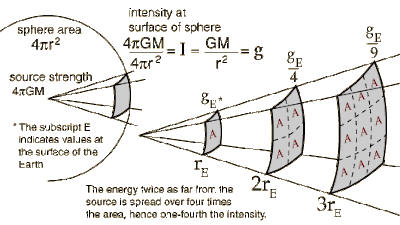
So beyond indeed, is the static realization of the structure of things. This is a more definable recognition of something that is very fluid and expressive. It is by our own humanistic natures that we like to compartmentalize?
"There comes a time when the mind takes a higher plane of knowledge but can never prove how it got there. All great discoveries have involved such a leap. The important thing is not to stop questioning." Albert Einstein (1879- 1955)
While this quote of Einstein is somewhat revealing of what can flash across the mind, it is by intense work that such a time allows for things to gather, and in this work, it will inevitable makes sense. Such cultivation allows for new things to be born and in such nurture and contemplation, something will eventually emerge.
 A picture of flux lines in QED (left) and QCD (right).
A picture of flux lines in QED (left) and QCD (right).Although it didn't properly describe strong interactions, in studying string theory physicists stumbled upon an amazing mathematical structure. String theory has turned out to be far richer than people originally anticipated. For example, people found that a certain vibrational state of the string has zero mass and spin 2. According to Einstein's theory of gravity, the gravitational force is mediated by a particle with zero mass and spin 2. So string theory is, among many other things, a theory of gravity!See: Why Strings
This points to a reductionistic view about the nature of reality. That we are part and parcel creating the constituents of the reality that we see, has a glue that binds, and keeps it together. For each this glue is a process that has meaning for each of us. While one would wonder where such motivation would allow each to perceive it as so one might ask what value is assign each stage of expression to see that such a scale has been reduce to a quality of a kind? It's music?
 Cover of Hiding in the Mirror: The Mysterious Allure of Extra Dimensions, from Plato to String Theory and Beyond by Lawrence M. Krauss
Cover of Hiding in the Mirror: The Mysterious Allure of Extra Dimensions, from Plato to String Theory and Beyond by Lawrence M. KraussViking Press
Guide Review - Hiding in the Mirror by Lawrence KraussSee:Book Review: Hiding in the Mirror
In Hiding in the Mirror, astrophysicist and cosmologist Lawrence M. Krauss addresses the concept of extra dimensions, from its appearance in popular culture such as Alice in Wonderland and The Time Machine to theoretical physics areas such as the theory of relativity and string theory. In fact, I would say that the book splits roughly 50/50 between cultural and scientific topics, which is part of the point of the book (that extra dimensions are tied to both areas), but for those who are specifically interested in the scientific aspects there are other books (such as Lisa Randall's Warped Passages) which address the scientific aspects in far more depth.
According to Krauss, extra dimensions have captured the human imagination well before it entered into exploration by physics in the last century or so. The book covers how the concepts were viewed by those in the past, as well as more recent science fiction, such as Star Trek (one of Krauss' favorite topics, as author of the bestselling The Physics of Star Trek). Much of this material is entertaining, but for those who are wanting to get to the heart of the physics, it can feel like filler.
About 100 pages of the book focuses on the recent work to find a unified theory of quantum gravity, focusing predominantly on string theory (with some mention of predecessors). This has been one of the areas where extra dimensions have become extremely dominant. Though Krauss exhibits some genuine skepticism about the track string theory is on, I think calling the book a criticism of string theory would be going a bit far. Krauss is placing string theory within a larger framework of extra dimensional movements in the past, many of which have proved incredibly enlightening and some of which have not done much. It's left to other books to determine whether string theory has any scientific merit.
See Also:



















